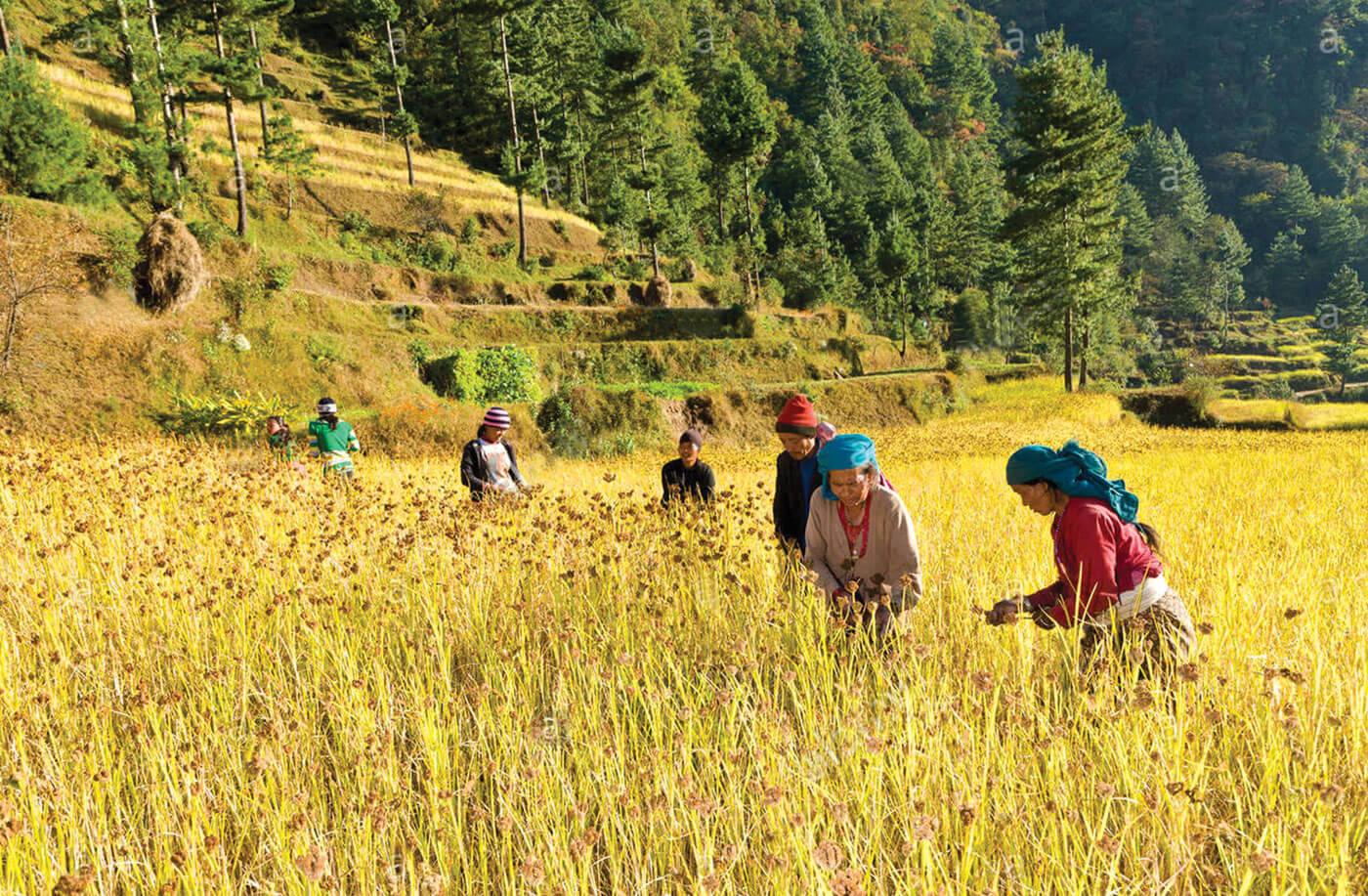The waste land
Drought and migration are leaving barren vast areas of Nepal’s terrace farm

Prolonged drought, absence of irrigation and outmigration of young men have left many areas of Nepal’s mid-western hills suffering a food crisis in a vicious cycle that is forcing even more people to move out.
Terrace farms in mountainside after mountainside lie fallow, wrinkling the arid, dusty slopes. The villages are mostly populated by the elderly, overworked women who have to trudge longer and longer to fetch water, and emaciated children.
In Tajamaila village of remote Humla district, successive monsoons have failed, and the fields are overgrown with dry weeds. Amar Rokaya says he can feed his children only one meal a day. The family ate up their entire stocks of corn and millet last year, including seeds. There is nothing to plant this year even if the rains come.

Rokaya works breaking stones for a road, and does not earn enough to feed his family. Parts of other mid-western mountains in Mugu, Bajura and Bajhang have also been reeling under a four-year drought.
“This is the worst drought ever,” says Govinda Bahadur Malla, the newly-elected chair of the Himali village council.
“People are fleeing the villages and moving to cities. Only those who have nowhere else to go are stuck here.”
Water sources have mostly dried up, forcing the women to walk for hours down to the river and climb back up to collect water. In Himali village, women from its 400 households have to walk one hour for water.

Last year, 6,500 tons of grain were transported to Bajura, which has been dependent on shipments for decades, but no one remembers it being this bad. Min Prasad Jaishi of the Bajura District Agriculture Office says there is a deficit of 13,000 tons of rice in his district alone. “It is now a battle to save at least the paddy seeds for the monsoon,” he says.
The food crisis in western Nepal predates climate change. The government in faraway Kathmandu never invested in boosting farm productivity by building irrigation canals. It was more lucrative to fly or truck in rice, and everyone along the way got their share.
Western Nepal has always had droughts, and the current extreme weather may have been exacerbated by climate change. With global warming, for instance, farmers have found that new harmful insects are moving up the mountains.

Mealybugs were rare here, and farmers never considered them a problem. Now, the insects are devastating the few crops that are there.
Fauji Kira insects used to be a nuisance only in the Tarai, now they have moved up to the midhills. Tomato farmers are battling a new type of pest they didn’t even have a name for, and have called it Tuta. Ram Krishna Subedi of National Crop Directorate says: “Insects we never knew are marching up the slopes, damaging crops of the few farmers who do not depend on the rain.”
Scientists say that average temperatures in the Himalaya are rising twice as fast as the global average. The effect can be seen in shrinking glaciers and receding snowlines, but also in falling ground water and erratic weather.
And it is not just the mid-western hills where farmers have been dealing with drought and insects. The magnitude of the problem may vary, but it is widespread across the hills. Winter rains are becoming more sparse, and when it does rain there are unseasonal blizzards, farmers say.
Climate scientist Ngamindra Dahal confirms that winters have become drier in the central Himalaya every year, and wheat harvests are the first casualty. Nepal had been producing 1.5 million tons of wheat every year, but it is projected to go down by 20% in the coming years.
Nearly 80% of Nepali farmers still depend on rain-fed agriculture, which means they are at the mercy of the weather which is becoming more and more unpredictable. Only 20% arable land has irrigation, and most of that is in the Tarai, with few irrigation facilities in these hills.

Adding to the problem is outmigration of young men, leaving fields fallow. And as soon as the man of the house migrates to India, Malaysia or the Gulf, his wife and children move to the towns. There, they buy food from the money he sends home, and pay for the children’s education. Their farms up in the mountains are abandoned, and goes back to being jungle.
Ten mountain districts like Taplejung, Panchthar, Palpa and Parbat have witnessed negative population growth in the last decade. Some of them have lost up to a third of their population. Twenty-seven of Nepal’s mountain districts showed a decline in total population between 2001 and 2011. Demographers say the hills and mountains will be nearly emptied by 2050, if this trend persists.
In contrast, Tarai districts like Jhapa, Morang, Sunsari and Rupandehi have seen population growth higher than the national average because of people moving down from the mountains.
In 2001, more than 156,000 hectares of terrace farms in the mountains were under paddy cultivation. Last year the area was down to 137,000 hectares. Areas under other crops like wheat and barley are also shrinking.
Agriculture expert Shankar Sapkota summarises the crisis in simple terms: “Migration has become an easy means of livelihood, but its impact on our agriculture economy is huge.”
(With inputs from Prakash Singh in Bajura)
Read also:
Migrating males and population decline, Om Astha Rai
A flood of migration, Shreejana Shrestha
Flood and food, Sunir Pandey
Down and out, Smriti Basnet
Mixed blessing in Mustang, Mukesh Pokhrel




